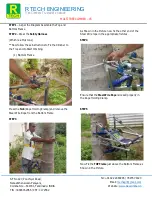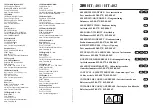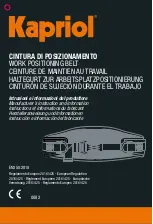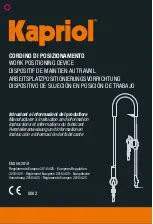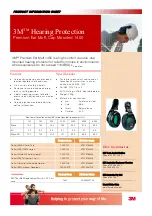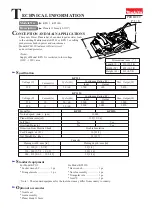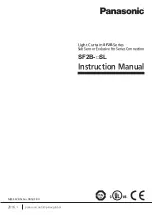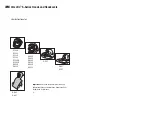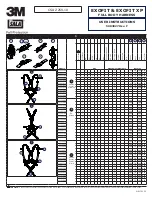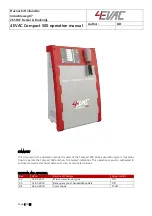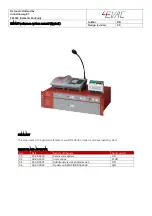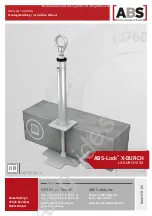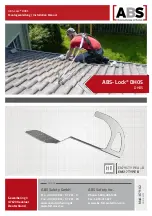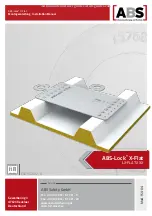
1948881
V1.4
12 August 2022
Installation:
The product can be mounted/suspended from any solid surface. Follow the below installation steps:
•
Determine the installation and power entry method.
•
The luminaire should be positioned so that prolonged staring into the luminaire at a distance closer
than 330mm is not expected.
•
Undo the Diffuser Clips, remove the Diffuser and Gear Tray. Position the batten base in the desired
location and Mark out the fixing points on the mounting surface.
•
If the cable entry is to be via the rear of the body
– Drill out a suitable entry-hole in the rear of the
batten body (must be suitably sealed after cable entry using a sealant). If the cable entry is via the
end of the batten - Install the provided cable gland, or bring in conduit, to the base as required for
the intended power access.
Note: Only round cables are to be used with the cable gland for an IP65 seal. Keep cable entry
straight and tension free. Ensure all seals are tight.
min. wire diameter 7mm, max. 12mm.
•
For surface mounting -
, there are 3 extrusions/posts at each end of the base. Drill out the desired
number of fixing points at each end.
Fixings must only be through the extrusions/mounting
posts.
o
Position the fitting to the mounting surface and mark the mounting holes.
o
Cable/Gland entry to be down if mounting vertically.
o
Drill the mounting holes.
o
Fix the base to the surface with appropriate fixings.
o
Seal any penetrations/fixing points with appropriate sealant.
•
For Surface Mount Clip
mounting,
measure/mark spacing (see Dimensions image),
install
stainless steel clips to surface (use appropriate fixings), then snap batten into clips.
•
For Suspension Mounting,
measure/mark spacing (see Dimensions image),
install suspension
device, E.G chain, and connect chain to batten base.
•
Wire mains power cable, 240V 50Hz, to terminals marked Lsw (Switched Active), Lem
(Emergency/Unswitched Active), N &
(and DALI Cable to terminals Da Da as applicable)
•
Attach Gear Tray to lanyards.
•
Re-Install the Diffuser, close all the Diffuser Clips and secure with screws
Wiring:
Sensor Version:
Dimensions:
Testing:
Once connected to the 240V mains supply, the unit must be allowed to charge the battery for at least 24
hours. Conduct the following tests:
•
For the first test, the emergency lamp must remain illuminated for at least 2 hours after disconnection
from the mains supply.
•
Subsequent tests require the unit to illuminate for at least 90 minutes. The results of all tests are
required to be recorded in a service logbook, which is to be kept on-site at all times. If the unit fails to
remain illuminated for the requisite time, remedial action must be taken to repair the situation and
once completed, the unit must pass a subsequent test. For more specific information, please refer to
the current edition of the AS 2293.3 Standard.
•
Press and hold Test Button or switch Off Mains Supply, check that the emergency lamp is On.
•
Release the Test Button or Switch On Mains Supply, check that the emergency lamp is Off (Non-
maintained operation).
Trouble Shooting:
Below are a list of common problems and their possible causes.
Fault:
The Green LED Test Switch indicator is not illuminated.
Check: A.C. is connected and is turned on.
Battery is connected
Test Switch for damage.
Fault:
Lamp does not illuminate in emergency mode.
Check: A.C. is connected.
Lamp is correctly inserted.
Battery is connected
Fault:
Lamp illuminates in emergency mode, but only stays on for a short period.
Check:
Battery has been allowed to charge for at least 24 hours.
Battery for damage.
Warranty:
For Product Warranty information and Terms and Conditions of Sales please refer to our website
http://clevertronics.com.au/terms-conditions-sale-australia-nz/



